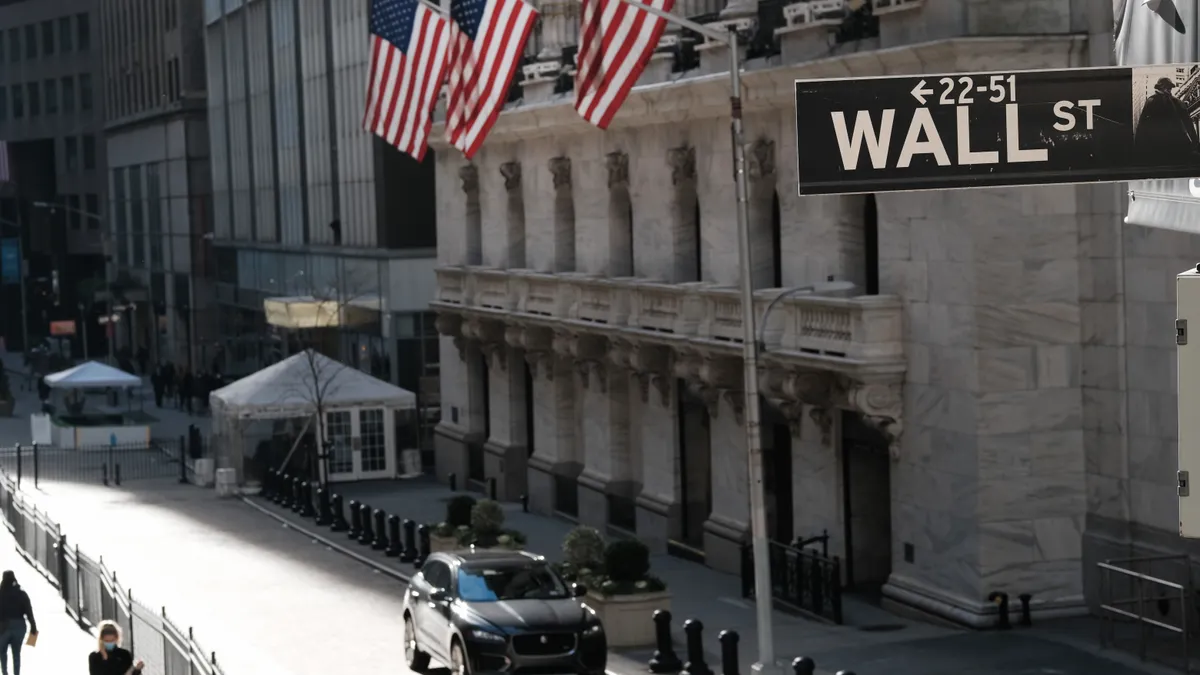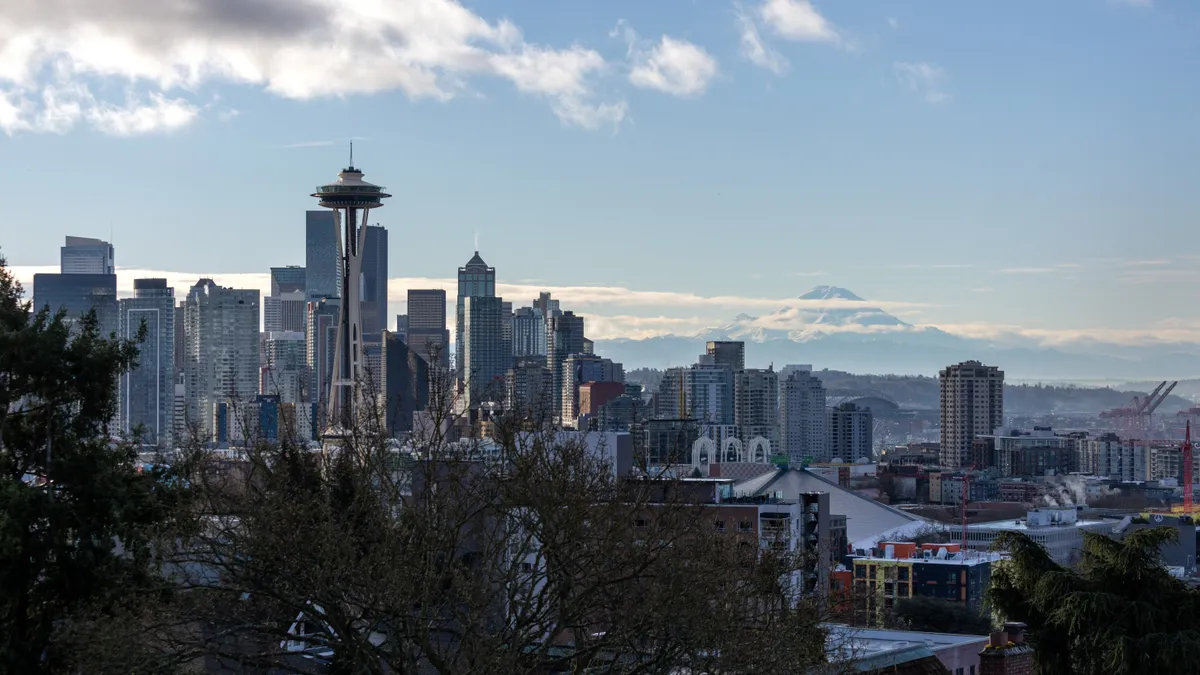Equity Residential kicked off the apartment REIT earnings season. And, for the second straight quarter, the Chicago-based firm beat analysts’ expectations.
EQR’s outperformance in the second quarter was driven by less-than-expected same-store expenses of 2.7%. Improvements in blended rent of 2.5% year over year, occupancy of 40 basis points and bad debt of 20 bps also helped.
Buoyed by that performance, EQR increased its guidance, bumping up same-store revenue and by 70 basis points and net operating income by 145 bps at the midpoint. It decreased expense guidance by 100 bps.
“Right now, we feel like we're in a really good spot for late July to deal with the balance of the year,” Michael Manelis, chief operating officer, said on the REIT’s Q2 earnings call.
However, Manelis, like EQR’s analysts, expects “seasonal deceleration curves” in Q3 and Q4.
“EQR's fiscal year guidance clearly reflects an expectation for continued deceleration in the second half of 2024 with blended rents expected to average 2.5% in Q3 and further down to 1.4% in Q4 … reflecting historical seasonal moderation as the peak leasing season winds down and demand softens,” wrote Haendel St. Juste, managing director of REITs for investment bank Mizuho Securities in a research note.
Here are three other takeaways from EQR’s earnings release and call last week with analysts:
Same-store expenses moderate
EQR did see same-store insurance costs rise 10.4% in Q2. However, it saw improvements in other expenses. Repairs and maintenance, payroll and utilities, which make up about half of its same-store costs, are flat or negative so far in 2024, according to EQR CFO Robert Garechana.
“While we expect growth to accelerate in the second half of this year, given a more challenging 2023 comparison, we still anticipate delivering very low growth of around 3% for the full year,” Garechana said on the call.
EQR’s executives attribute these reductions to its use of technology and pods of properties that share resources. As it adds properties in its expansion markets in the Sun Belt, the REIT sees opportunities for more efficiency.
“Clearly, you see [the benefits of pods] show up in our payroll growth numbers, and that is what we would expect going forward in those expansion markets,” Manelis said. “But there's also opportunities in the service side of the business, as we think about leveraging resources differently, that take our dependency off of third-party contractors that kind of keeps that R&M number down.”
Other costs are harder to corral. Property taxes represent about 45% of EQR’s expenses and company executives don’t see relief there. But they’re hopeful about savings in other places.
“I do see some opportunity in insurance,” CEO Mark Parrell said on the call. “I hope we get some benefit there, especially if the hurricane season isn’t too bad. We don't own in those markets, but it's all very much connected.”
Geographic divergence
In Q2, EQR saw its strongest performance on the coasts. Boston was the top market, posting sequential revenue growth of 2.6%, followed by Seattle and Washington, D.C., at 1.5%, according to St. Juste.
“Our East Coast markets are the best performers, with occupancies around 97%,” Manelis said. “On the West Coast, Seattle is performing particularly well, and San Francisco is showing improvement, but not quite at the pace of Seattle.”
Still, San Francisco’s sequential same-store revenue growth was 0.5%, trailing Los Angeles and New York at 0.7%. Orange County, California, posted 0.2% growth. “Our Southern California markets have good demand but are feeling some pressure on pricing,” Manelis said.
BY THE NUMBERS
| Category | Q2 | YOY Change |
| Property revenue | $718.1 million | 2.0% |
| Net operating income | $493.6 million | 3.0% |
| Operating expenses | $224.5 million | 2.7% |
| Funds from operations | $0.94 | 1.1% |
| Rent per unit | $3,107 | 2.5% |
| Occupancy rate | 96.4% | 50 bps |
EQR’s expansion markets trailed its portfolio with negative 0.2% same-store revenue. However, they still posted occupancy rates at or above 95%.
“Our expansion markets of Atlanta; Austin, [Texas]; Dallas/Fort Worth; and Denver, which together constitute 6% of our NOI, continue to have good demand but remain under pressure from continuing high levels of supply, with our Atlanta and Austin portfolios most impacted,” Parrell said.
Acquisitions pick up
Apartment sales seem to be picking up for EQR, as they are for the rest of the industry. “We're seeing more transaction activity as the interest rate climate stabilizes and sellers’ and buyers’ cap rate expectations coalesce around 5%,” Parrell said. “Transaction volume in our markets in the second quarter of 2024 was almost triple what it was in the first quarter and double what it was in the second quarter of 2023.”
In Q2, EQR acquired a 160-unit lease-up property in the Boston market for approximately $62.6 million at a cap rate of 5.7%. It expects the asset to stabilize in its second year of ownership.
The REIT also acquired two properties totaling 644 units in Atlanta and Dallas/Ft. Worth for $216.8 million. It is also under contract to buy a 202-unit asset in Denver for $77 million.
“Generally speaking, we are buying recently built properties in our expansion markets at a basis that compares well to replacement costs and underwriting a 5% forward cap rate with our pro forma assuming further degradation of rents, but also assuming the benefits in year one of our more focused delinquency and vacancy management processes,” Parrell said.
EQR sold two properties — one in suburban Washington, D.C., and one in San Francisco — totaling 327 apartments for approximately $85.5 million at a yield of 6.2%. The properties’ average age was 35 years.
The REIT also entered into joint ventures to develop land parcels in Boston and Seattle that were acquired in Q2. EQR invested $53 million in the projects as of the end of the quarter.
Click here to sign up to receive multifamily and apartment news like this article in your inbox every weekday.







































